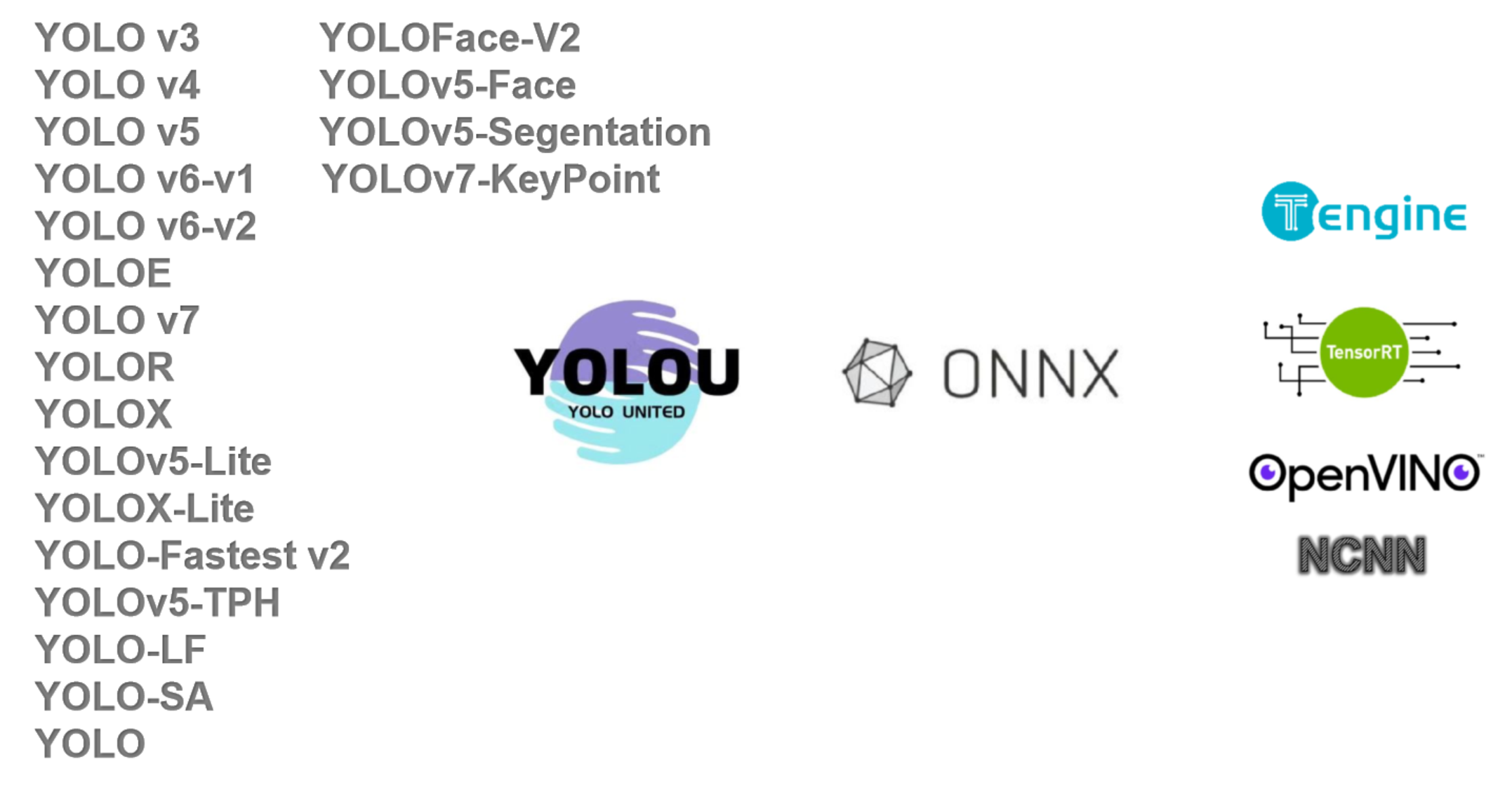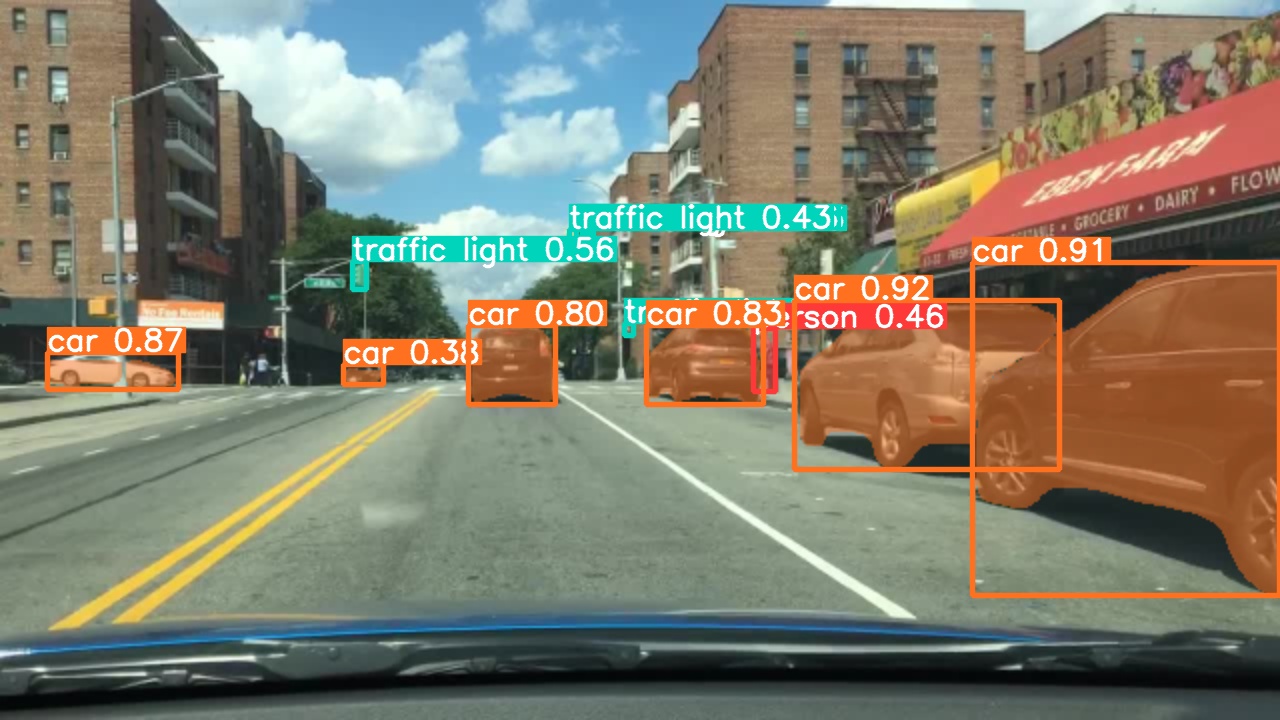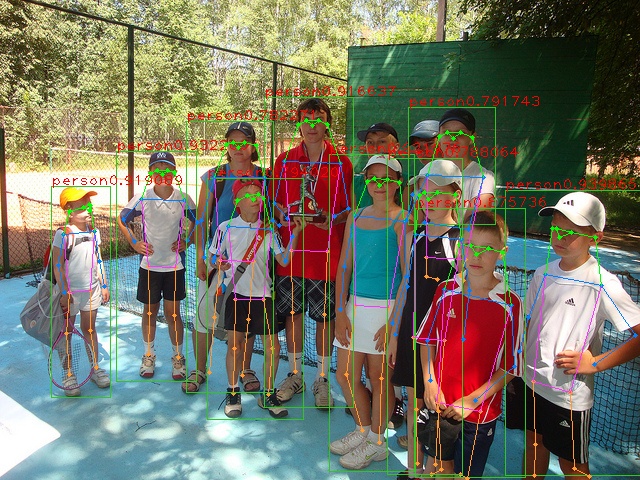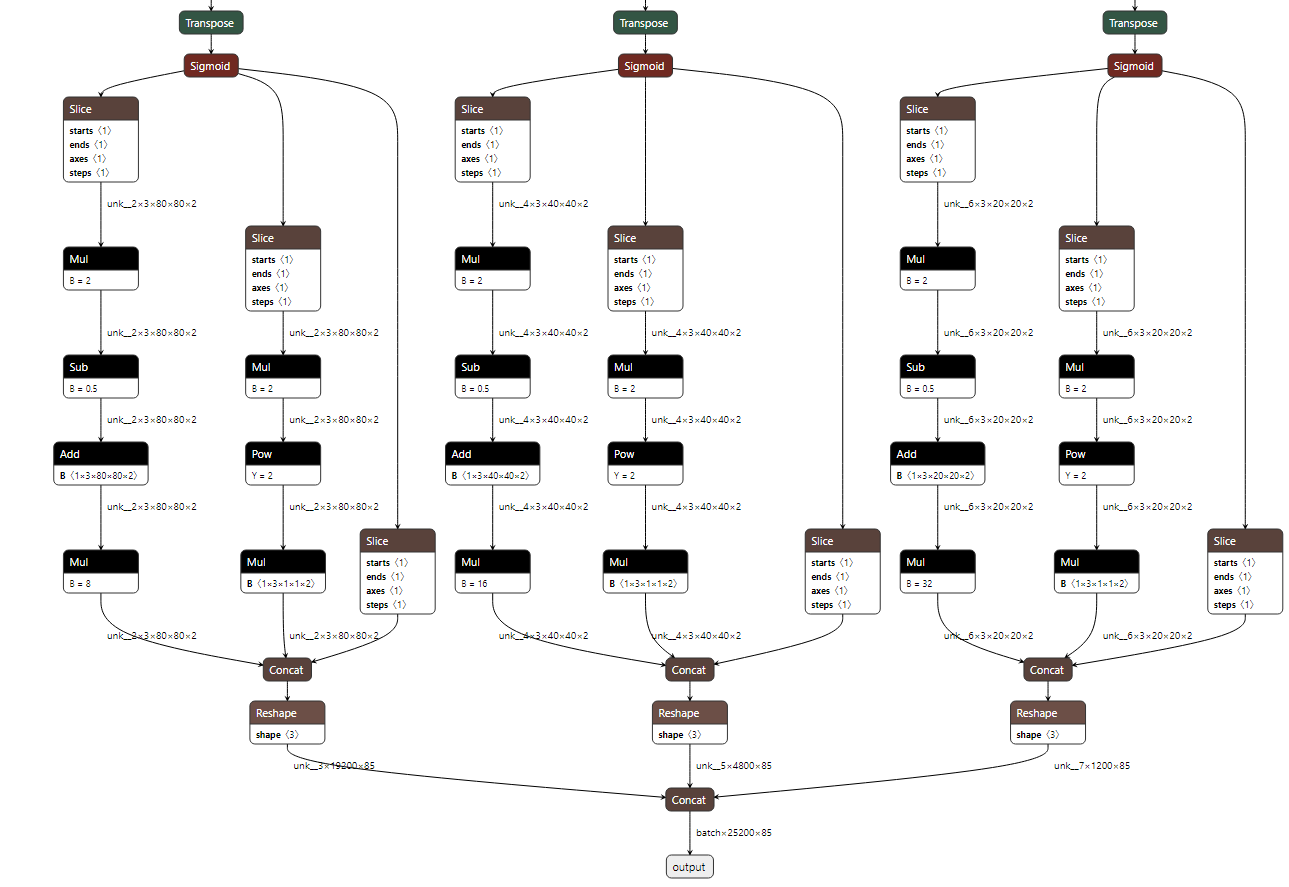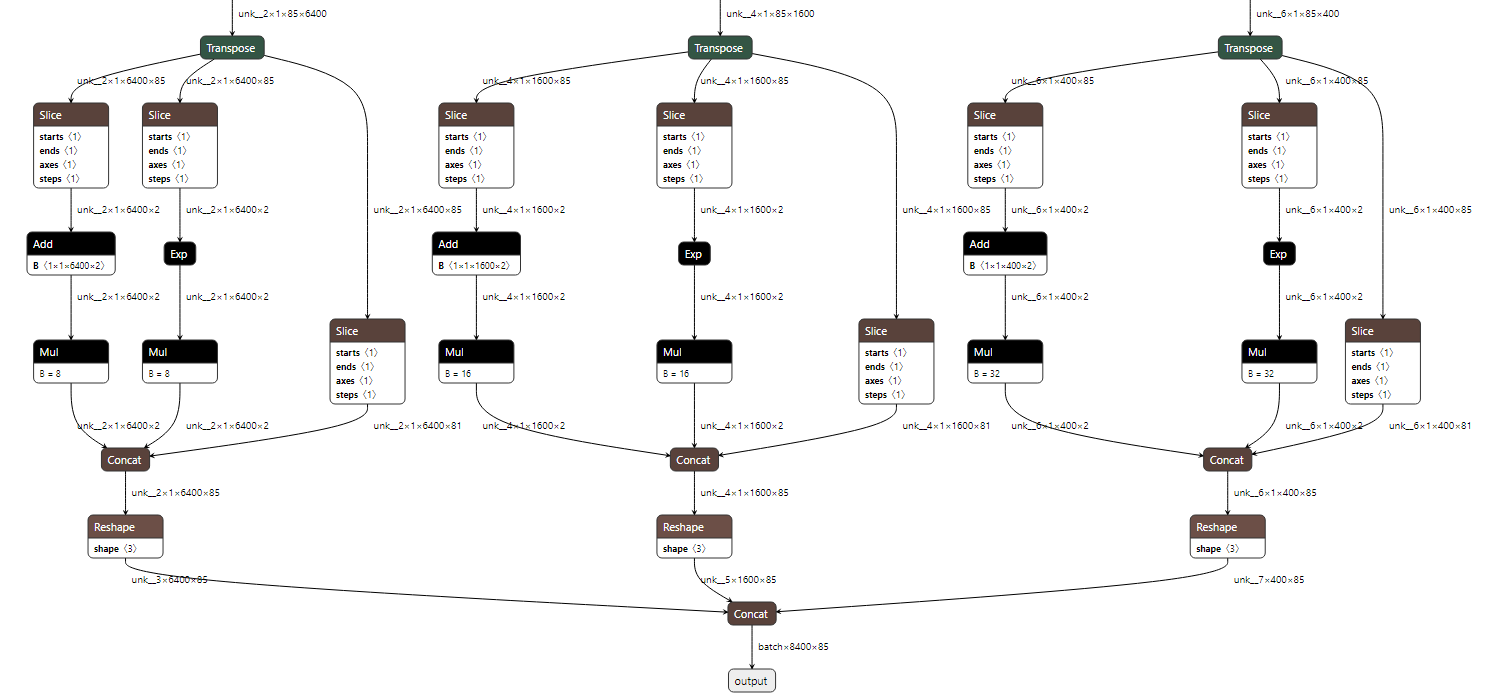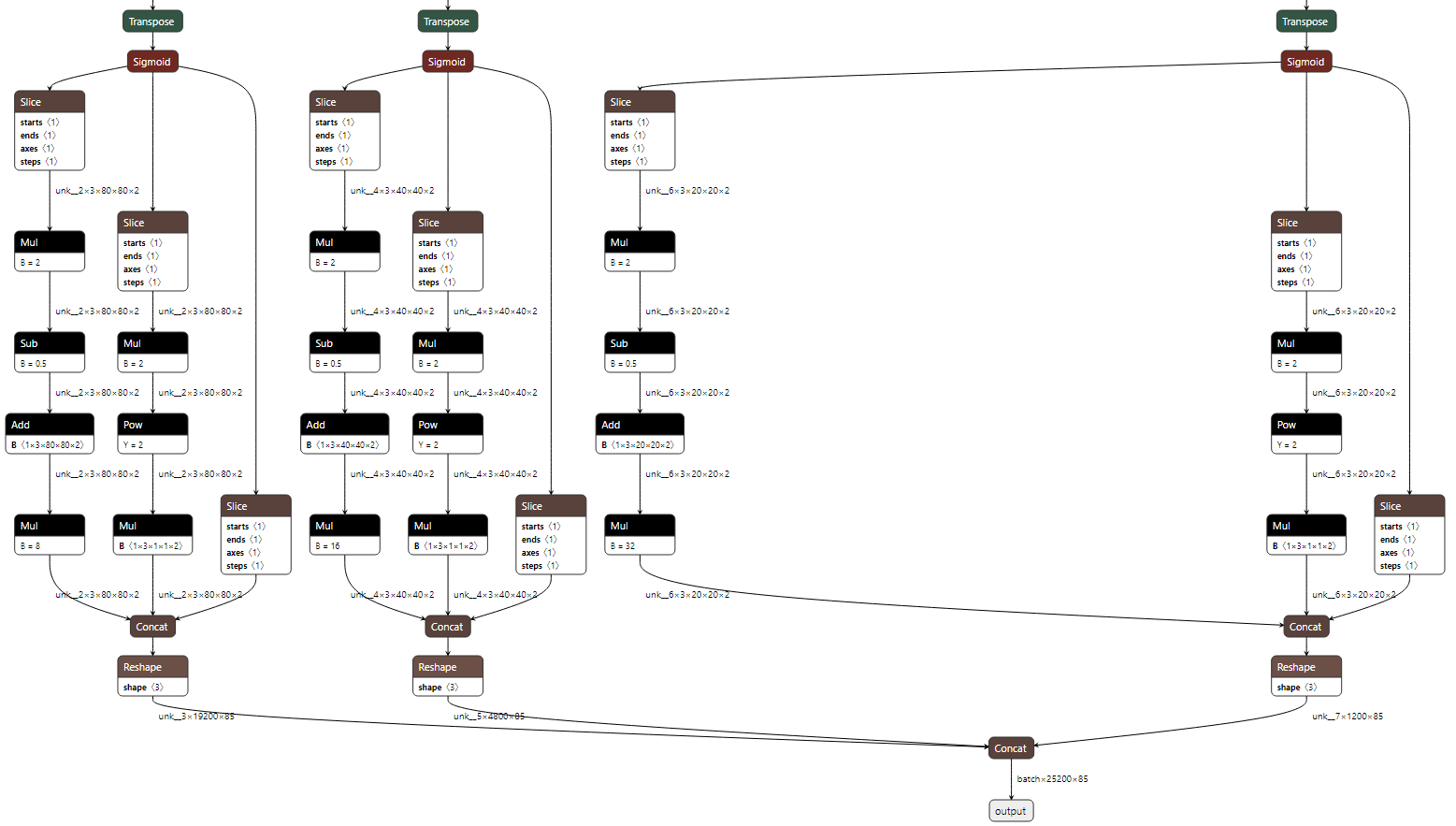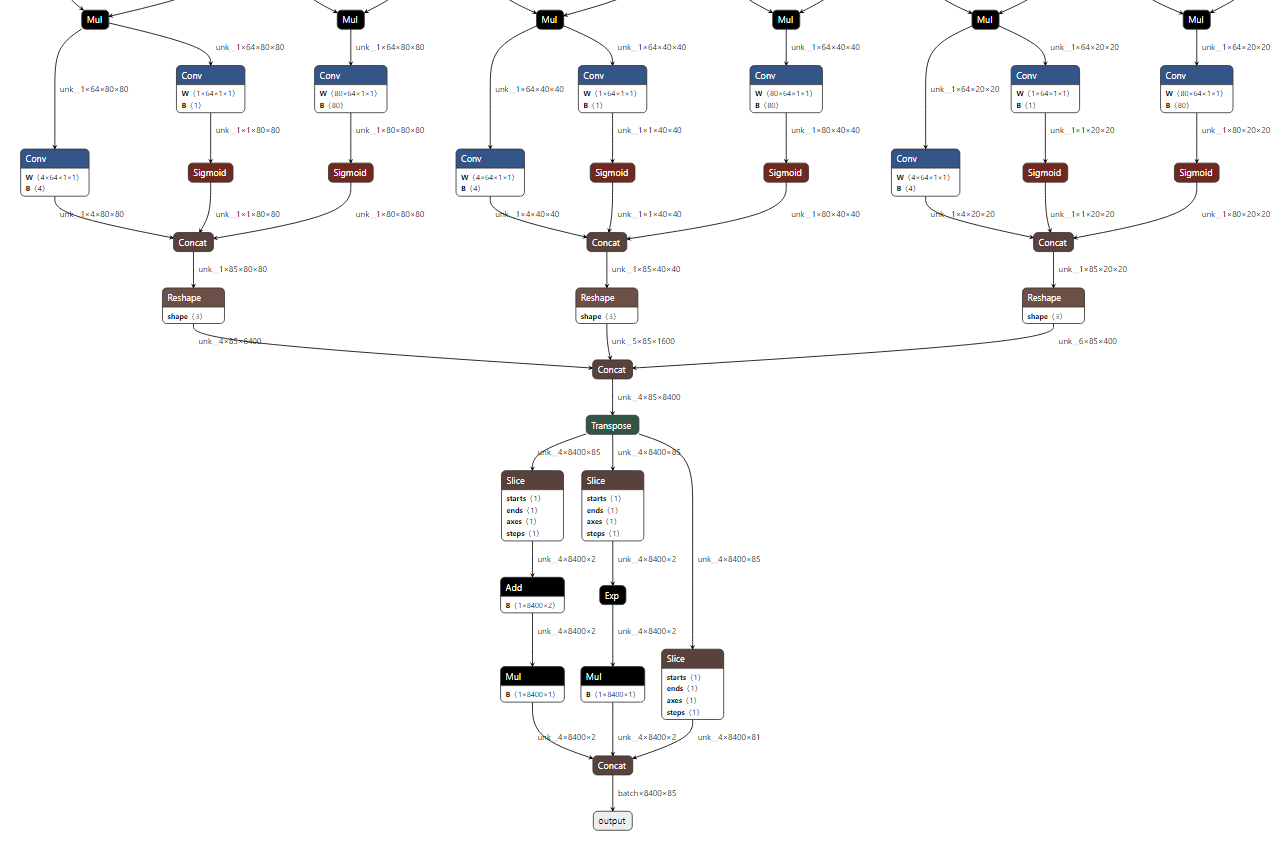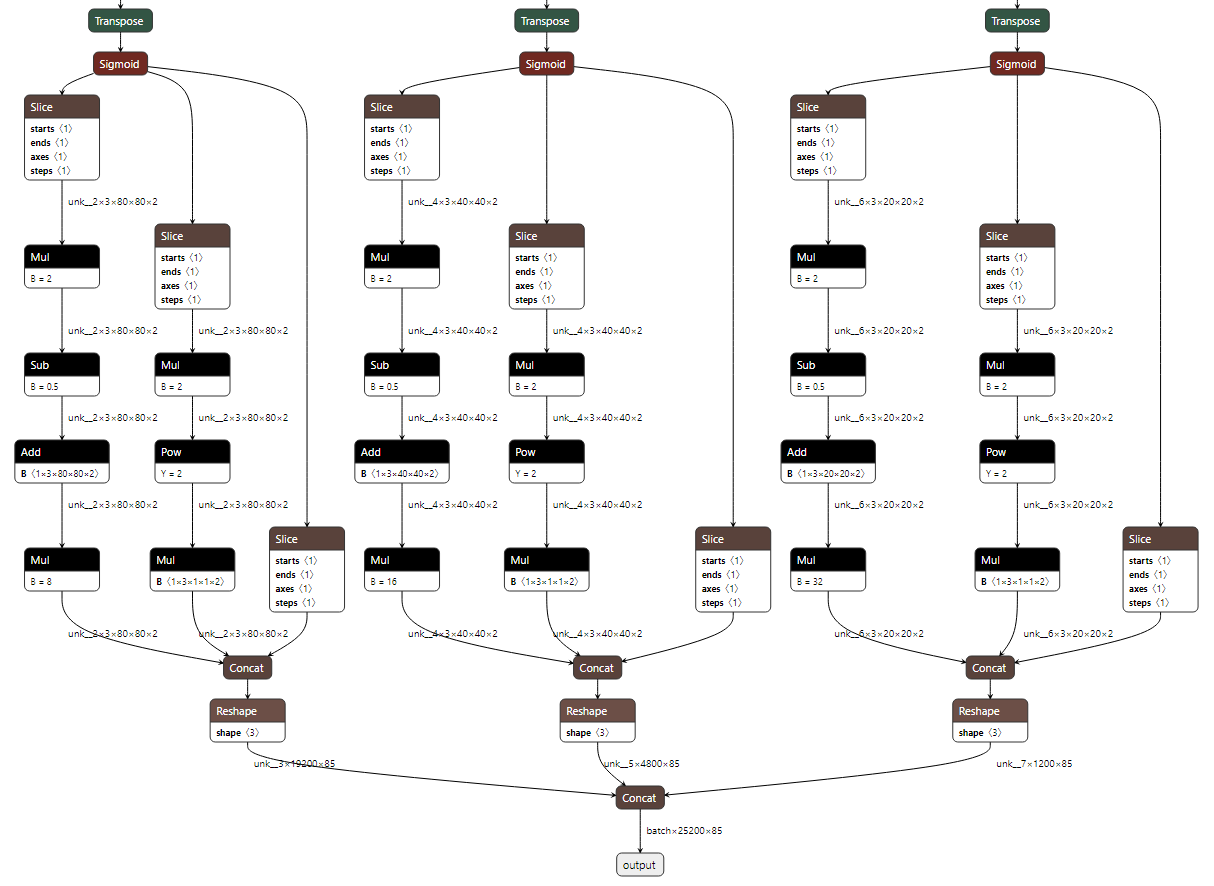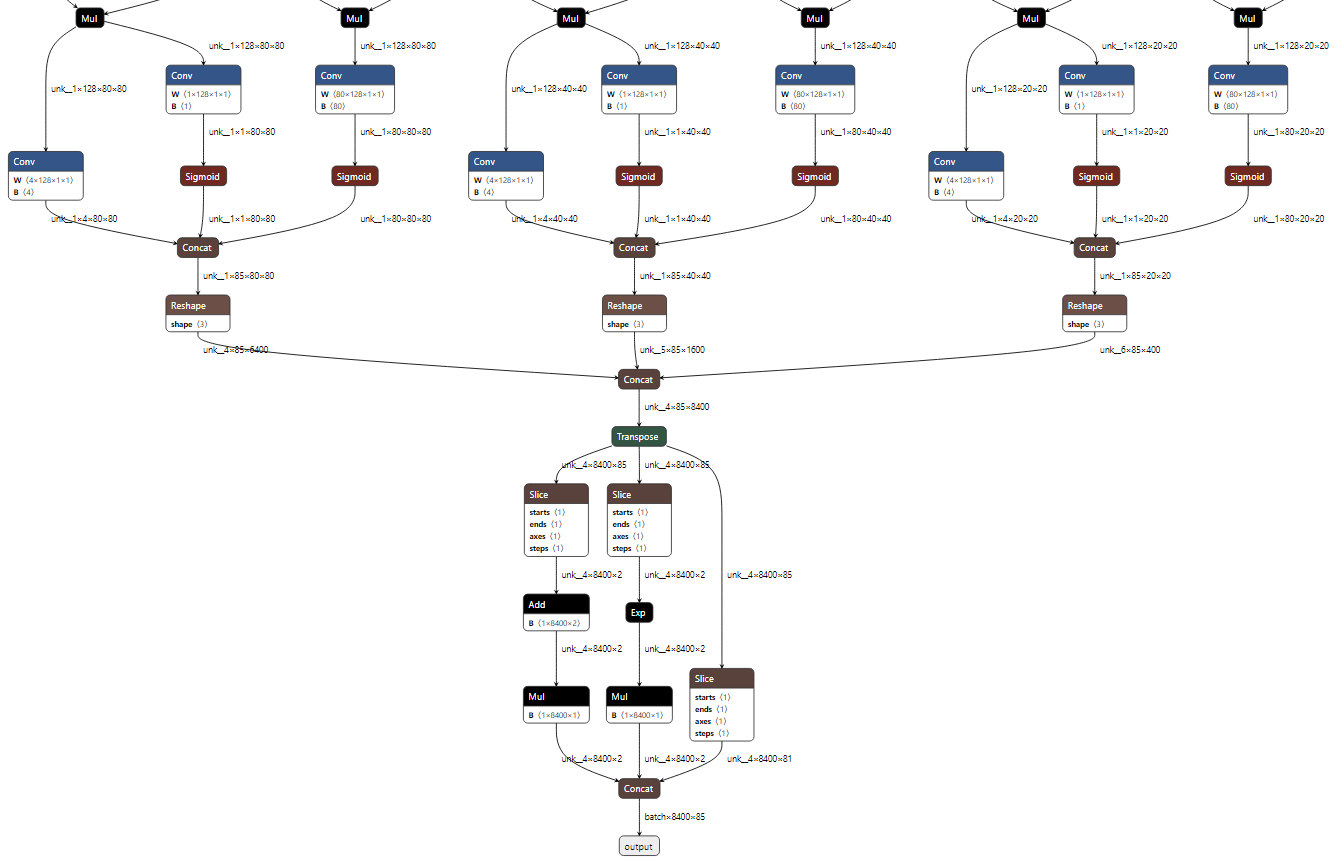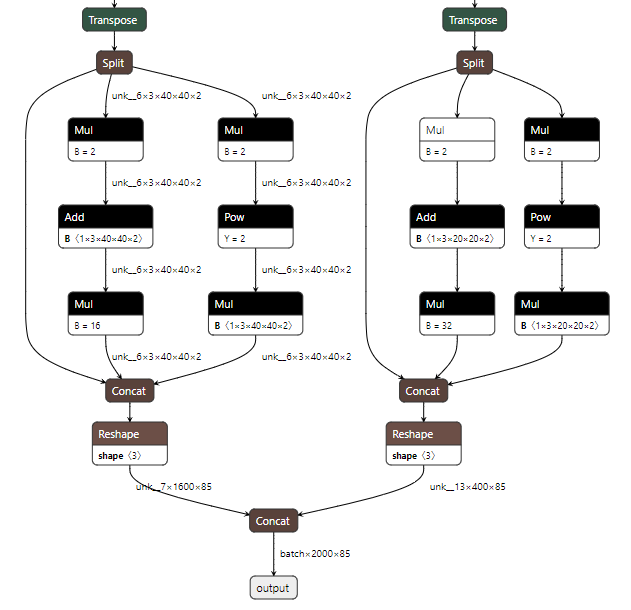The purpose of our creation of YOLOU is to better learn the algorithms of the YOLO series and pay tribute to our predecessors.
Here "U" means United, mainly to gather more algorithms about the YOLO series through this project, so that friends can better learn the knowledge of object detection. At the same time, in order to better apply AI technology, YOLOU will also join The corresponding Deploy technology will accelerate the implementation of the algorithms we have learned and realize the value.
At present, the YOLO series algorithms mainly included in YOLOU are:
Anchor-base: YOLOv3, YOLOv4, YOLOv5, YOLOv5-Lite, YOLOv7, YOLOv5-TPH, YOLO-Fastest v2, YOLO-LF, YOLO-SA, YOLOR, YOLOv5-SPD
Anchor-Free: YOLOv6-v1, YOLOv6-v2, YOLOX, YOLOE, YOLOX-Lite, FastestDet
Face-Detection: YOLOv5-Face, YOLOFace-v2
Segmentation: YOLOv5-Segment
KeyPoint: YOLOv7-Keypoint
Classfication: ResNet, DarkNet,......
Comparison of ablation experiment results
| Model | size(pixels) | mAP@.5 | mAP@.5:95 | Parameters(M) | GFLOPs | TensorRT-FP32(b16) ms/fps |
TensorRT-FP16(b16) ms/fps |
|---|---|---|---|---|---|---|---|
| YOLOv5n | 640 | 45.7 | 28.0 | 1.9 | 4.5 | 0.95/1054.64 | 0.61/1631.64 |
| YOLOv5s | 640 | 56.8 | 37.4 | 7.2 | 16.5 | 1.7/586.8 | 0.84/1186.42 |
| YOLOv5m | 640 | 64.1 | 45.4 | 21.2 | 49.0 | 4.03/248.12 | 1.42/704.20 |
| YOLOv5l | 640 | 67.3 | 49.0 | 46.5 | 109.1 | ||
| YOLOv5x | 640 | 68.9 | 50.7 | 86.7 | 205.7 | ||
| YOLOv6-T | 640 | ||||||
| YOLOv6-n | 640 | ||||||
| YOLOv6 | 640 | 58.4 | 39.8 | 20.4 | 28.8 | 3.06/326.93 | 1.27/789.51 |
| YOLOv7 | 640 | 69.7 | 51.4 | 37.6 | 53.1 | 8.18/113.88 | 1.97/507.55 |
| YOLOv7-X | 640 | 71.2 | 53.7 | 71.3 | 95.1 | ||
| YOLOv7-W6 | 1280 | 72.6 | 54.9 | ||||
| YOLOv7-E6 | 1280 | 73.5 | 56.0 | ||||
| YOLOv7-D6 | 1280 | 74.0 | 56.6 | ||||
| YOLOv7-E6E | 1280 | 74.4 | 56.8 | ||||
| YOLOX-s | 640 | 59.0 | 39.2 | 8.1 | 10.8 | 2.11/473.78 | 0.89/1127.67 |
| YOLOX-m | 640 | 63.8 | 44.5 | 23.3 | 31.2 | 4.94/202.43 | 1.58/632.48 |
| YOLOX-l | 640 | 54.1 | 77.7 | ||||
| YOLOX-x | 640 | 104.5 | 156.2 | ||||
| v5-Lite-e | 320 | 35.1 | 0.78 | 0.73 | 0.55/1816.10 | 0.49/2048.47 | |
| v5-Lite-s | 416 | 42.0 | 25.2 | 1.64 | 1.66 | 0.72/1384.76 | 0.64/1567.36 |
| v5-Lite-c | 512 | 50.9 | 32.5 | 4.57 | 5.92 | 1.18/850.03 | 0.80/1244.20 |
| v5-Lite-g | 640 | 57.6 | 39.1 | 5.39 | 15.6 | 1.85/540.90 | 1.09/916.69 |
| X-Lite-e | 320 | 36.4 | 21.2 | 2.53 | 1.58 | 0.65/1547.58 | 0.46/2156.38 |
| X-Lite-s | 416 | Training… | Training… | 3.36 | 2.90 | ||
| X-Lite-c | 512 | Training… | Training… | 6.25 | 5.92 | ||
| X-Lite-g | 640 | 58.3 | 40.7 | 7.30 | 12.91 | 2.15/465.19 | 1.01/990.69 |
git clone https://github.com/jizhishutong/YOLOU
cd YOLOU
pip install -r requirements.txtpython train_det.py --mode yolov6 --data coco.yaml --cfg yolov6.yaml --weights yolov6.pt --batch-size 32python detect_det.py --source 0 # webcam
file.jpg # image
file.mp4 # video
path/ # directory
path/*.jpg # glob
'https://youtu.be/NUsoVlDFqZg' # YouTube
'rtsp://example.com/media.mp4' # RTSP, RTMP, HTTP streamSee keypoint.ipynb.
DataSet
train: ../coco/images/train2017/
val: ../coco/images/val2017/├── images # xx.jpg example
│ ├── train2017
│ │ ├── 000001.jpg
│ │ ├── 000002.jpg
│ │ └── 000003.jpg
│ └── val2017
│ ├── 100001.jpg
│ ├── 100002.jpg
│ └── 100003.jpg
└── labels # xx.txt example
├── train2017
│ ├── 000001.txt
│ ├── 000002.txt
│ └── 000003.txt
└── val2017
├── 100001.txt
├── 100002.txt
└── 100003.txtExpand
python export.py --weights ./weights/yolov6/yolov6s.pt --include onnx In order to facilitate the deployment and implementation of friends here, all models included in YOLOU have been processed to a certain extent, and their pre- and post-processing codes can be used in one set, because the format and output results of the ONNX files they export are consistent.
Expand
https://github.com/ultralytics/yolov5
https://github.com/WongKinYiu/yolor
https://github.com/ppogg/YOLOv5-Lite
https://github.com/WongKinYiu/yolov7
https://github.com/meituan/YOLOv6
https://github.com/ultralytics/yolov3
https://github.com/Megvii-BaseDetection/YOLOX
https://github.com/WongKinYiu/ScaledYOLOv4
https://github.com/WongKinYiu/PyTorch_YOLOv4
https://github.com/WongKinYiu/yolor
https://github.com/shouxieai/tensorRT_Pro
https://github.com/Tencent/ncnn
https://github.com/Gumpest/YOLOv5-Multibackbone-Compression
https://github.com/positive666/yolov5_research
https://github.com/cmdbug/YOLOv5_NCNN
https://github.com/OAID/Tengine
Expand
If you use YOLOU in your research, please cite our work and give a star ⭐: @misc{yolou2022,
title = { YOLOU:United, Study and easier to Deploy},
author = {ChaucerG},
year={2022}
}
